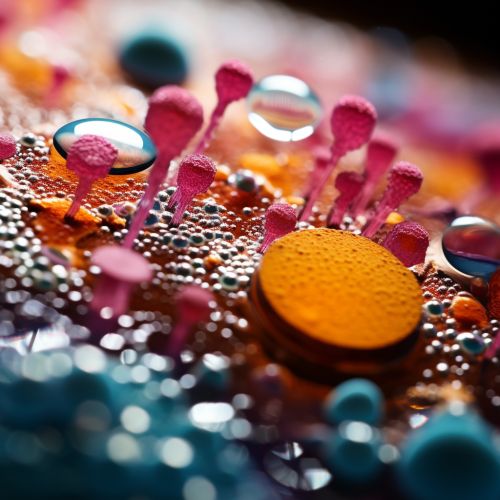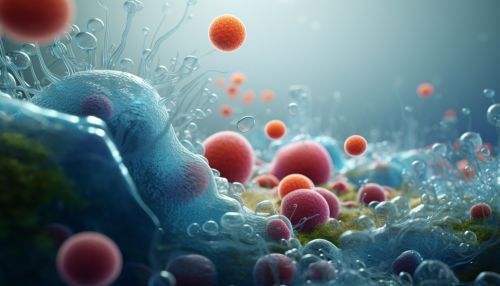Mechanisms of Microbial Biosurfactant Production
Introduction
Microbial biosurfactants are surface-active compounds produced by microorganisms. These compounds have the ability to reduce surface and interfacial tension and are involved in a variety of biological processes. The production of microbial biosurfactants is a complex process that involves several mechanisms.


Biosurfactant Production
Microorganisms produce biosurfactants through a series of biochemical reactions. The process begins with the uptake of nutrients from the environment. The nutrients are then metabolized and converted into biosurfactant precursors. These precursors are assembled into biosurfactants through a series of enzymatic reactions.
Nutrient Uptake
Microorganisms take up nutrients from their environment through a process known as active transport. This process involves the use of energy to move nutrients across the cell membrane. The nutrients required for biosurfactant production include carbon, nitrogen, and phosphorus.
Metabolism of Nutrients
Once inside the cell, the nutrients are metabolized through a series of biochemical reactions. The carbon source is metabolized through the glycolytic pathway, resulting in the production of pyruvate. Pyruvate is then converted into acetyl-CoA, which is used in the citric acid cycle to produce energy and biosurfactant precursors.
Biosurfactant Assembly
The biosurfactant precursors are assembled into biosurfactants through a series of enzymatic reactions. The enzymes involved in this process are encoded by genes that are regulated by environmental conditions and cellular signals.
Regulation of Biosurfactant Production
The production of biosurfactants is regulated at both the genetic and metabolic levels. At the genetic level, the expression of genes involved in biosurfactant production is controlled by regulatory elements. At the metabolic level, the availability of nutrients and the metabolic state of the cell influence biosurfactant production.
Genetic Regulation
The genes involved in biosurfactant production are often organized in operons. An operon is a group of genes that are transcribed together. The expression of these genes is controlled by regulatory elements, such as promoters and enhancers.
Metabolic Regulation
The metabolic state of the cell also influences biosurfactant production. When nutrients are abundant, the cell prioritizes growth and reproduction. However, when nutrients become scarce, the cell shifts its priorities towards survival, which includes the production of biosurfactants.
Applications of Microbial Biosurfactants
Microbial biosurfactants have a wide range of applications. They are used in the food industry as emulsifiers, in the pharmaceutical industry as drug delivery systems, and in the environmental industry for bioremediation.
Food Industry
In the food industry, microbial biosurfactants are used as emulsifiers. They help to mix oil and water, improving the texture and stability of food products.
Pharmaceutical Industry
In the pharmaceutical industry, microbial biosurfactants are used as drug delivery systems. They can encapsulate drugs, improving their solubility and bioavailability.
Environmental Industry
In the environmental industry, microbial biosurfactants are used for bioremediation. They can enhance the solubility and mobility of pollutants, facilitating their degradation by microorganisms.
